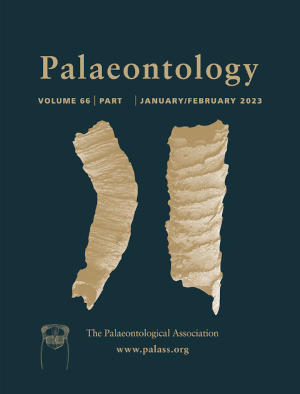Article: Inaccurate fossil placement does not compromise tip-dated divergence times
Publication: Palaeontology
Volume:
66
Part:
6
Publication Date:
2023
Article number:
e12680
Author(s):
Nicolás Mongiardino Koch, Russell J. Garwood, and Luke A. Parry
Abstract
Abstract Time-scaled phylogenies underpin the interrogation of evolutionary processes across deep timescales, as well as attempts to link these to Earth's history. By inferring the placement of fossils and using their ages as temporal constraints, tip dating under the fossilized birth–death (FBD) process provides a coherent prior on divergence times. At the same time, it also links topological and temporal accuracy, as incorrectly placed fossil terminals should misinform divergence times. This could pose serious issues for obtaining accurate node ages, yet the interaction between topological and temporal error has not been thoroughly explored. We simulate phylogenies and associated morphological datasets using methodologies that incorporate evolution under selection, and are benchmarked against empirical datasets. We find that datasets of 300 characters and realistic levels of missing data generally succeed in inferring the correct placement of fossils on a constrained extant backbone topology, and that true node ages are usually contained within Bayesian posterior distributions. While increased fossil sampling improves the accuracy of inferred ages, topological and temporal errors do not seem to be linked: analyses in which fossils resolve less accurately do not exhibit elevated errors in node age estimates. At the same time, inferred divergence times are biased, probably due to a mismatch between the FBD prior and the shape of our simulated trees. While these results are encouraging, suggesting that even fossils with uncertain affinities can provide useful temporal information, they also emphasize that palaeontological information cannot overturn discrepancies between model priors and the true diversification history.
